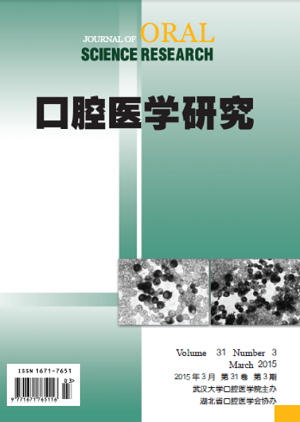|
|
Reconstruction of the Incisor Papillae following Interdisciplinary Approach Treatment in Adult Periodontal Patients.
LIU Wen-fang, ZHU Li-hong, HE Fei,et al.
2015, 31(3):
294-297.
Objective: To evaluate interdisciplinary approach treatment in reconstructing incisor papillae involved periodontal disease with deep overbite and crown restored. Methods: Nineteen adult patients were treated. For each patient, probing pocket depth (PD) and bleeding on probing (BOP) were assessed at baseline,3-month after initial therapy, the end of orthodontic treatment,the bebinning and 6-month and 12-month after temporary crown restored; Papilla index(PI) and papillary height (PH) were assessed only at the back three timepoint. Non-parametric, χ2 and One-Way ANOVA tests were carried out for the statistical analysis of the data. Results: Three months after initial therapy, the sites with PD≥4 mm accounted for 11.42% of the observed teeth and 95.37% (103/108) of buccal and lingual sites of the teeth showed negative bleeding on probing, These findings were better than at baseline; At the end of orthodontic treatment, PD≥4 mm accounted for 13.98%, 80.56% BOP showed negative than three months after initial therapy; and there was no difference at the beginning, 6-month and 12-month after temporary crown restored. At the beginning , 6-month and 12-month after temporary crown restored , the levels Ⅲof the PI were 1,8 and 17,the levels Ⅱ were 13,16 and 11,respectively,among the 35 observed papillae,there was statistic difference between them. The heights of gingival papillae measured were (1.54±0.54) mm,(2.31±0.56)mm and(3.08±0.50)mm,these results revealed significant difference. Conclusion: After initial therapy, right selection of indications, interdisciplinary approach and accurate design may reconstruct the interproximal soft tissue, with esthetic improvement of the papillary level.
References |
Related Articles |
Metrics
|

